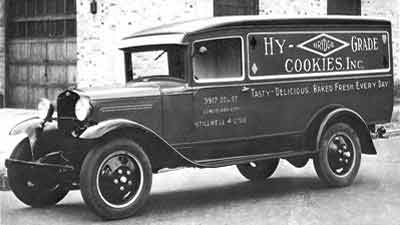I recently unpacked ~50 diecast vehicles to photograph prior to listing them for sale here on the forum. Long story short, I ended up taking photos of them two-at-a-time for the most part using some notion of grouping like items together.
So, I ended up with two 1932 Ford delivery trucks (as identified on their chassis) and placed them side-by-side to photograph. I was surprised that although they were both stated to be 1/43 models, there was a noticeable difference in their size. How can this be?
I recall reading on the forum that there is no true "scale" when it comes to 1/43 diecast models; at least not in the same sense that we often use the term.
I took some more pictures of the two trucks; and, since I've recently acquired a digital caliper ($6.00 shipped on Amazon), measured the trucks. First the measurements (My dimensional data/columns keep shifting despite editing and correcting![]() ):
):
YELLOW WHITE
Wheel base length: 70.47 64.00
Wheel base width: 37.30 40.44
Roof length: 65.25 55.16
Roof width: 33.30 28.32
(Notes: All measurements are mm; and, the roof is used because it was the easiest body dimension to measure for length and width.)
And here are the photos:
The Mobiloil truck is by ELIGOR and the W-D truck is by Ertl. It's been an interesting exercise to confirm that in 1/43 diecast models, "scale" means whatever the manufacturer desires. Which is not wholly unlike the use of "scale" in our "O scale" trains.
NOTE: I have given up, after five attempts, to edit the dimensional data into nice columns. The numbers are now cooperating, but the "Yellow" and "White" words defy correction.






